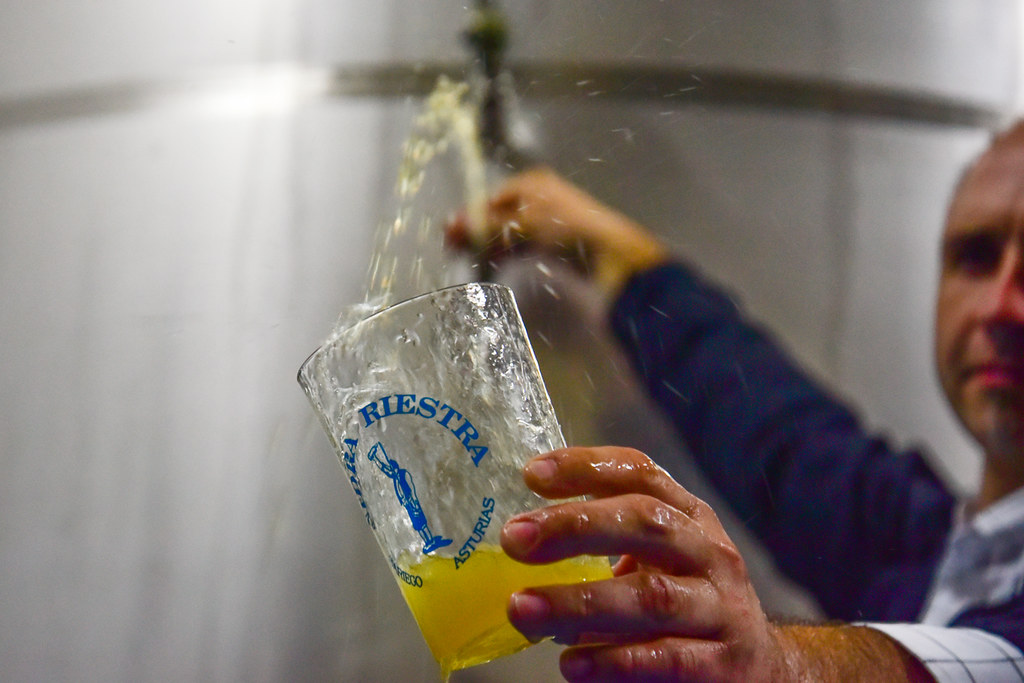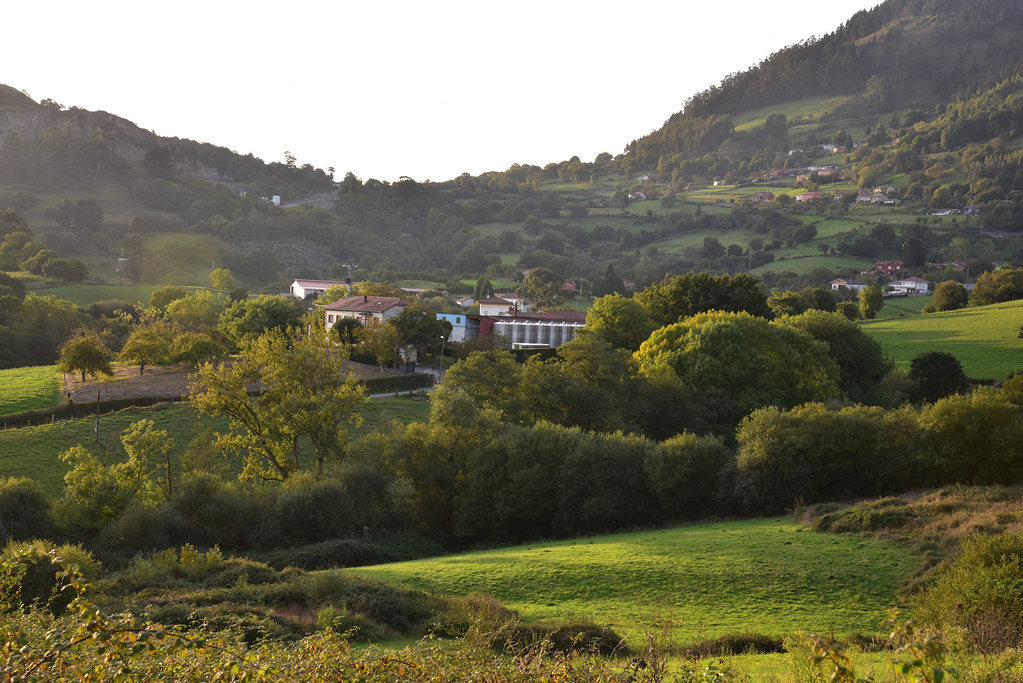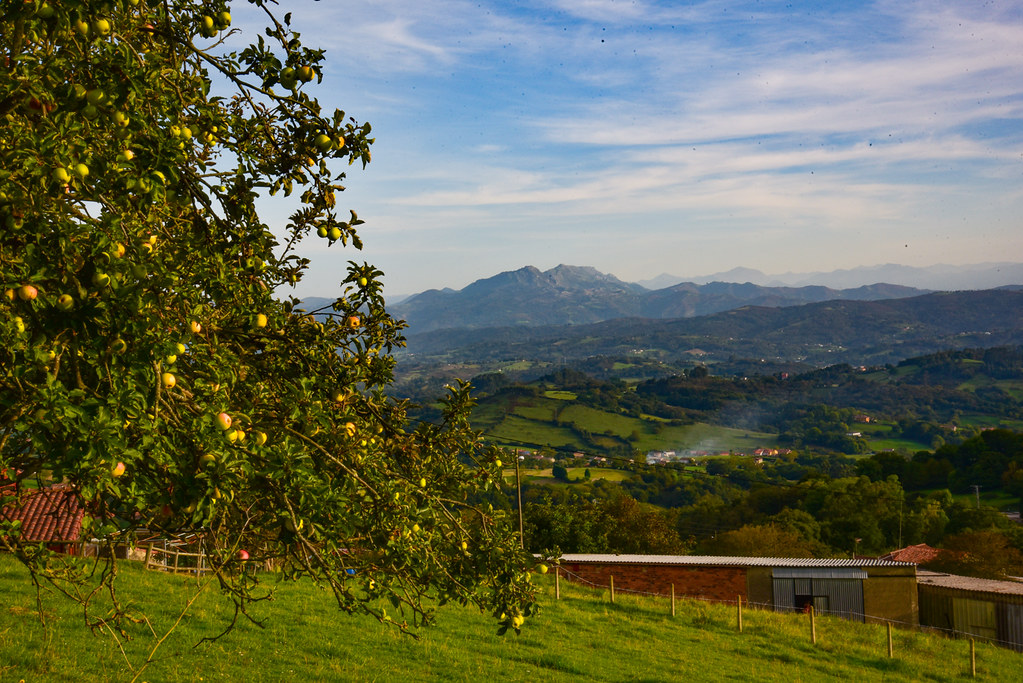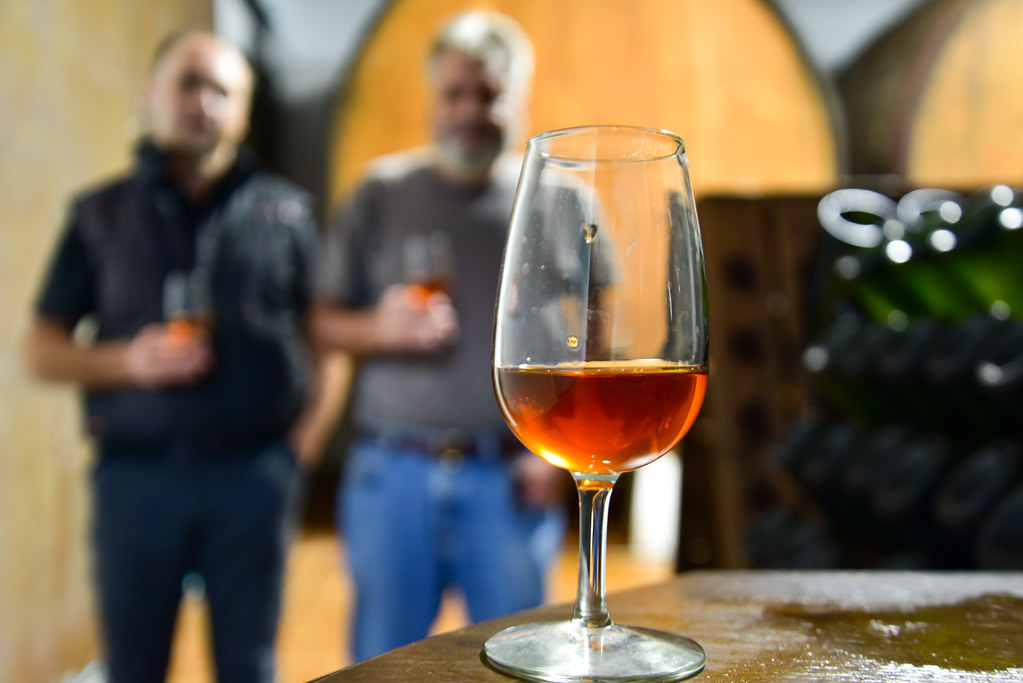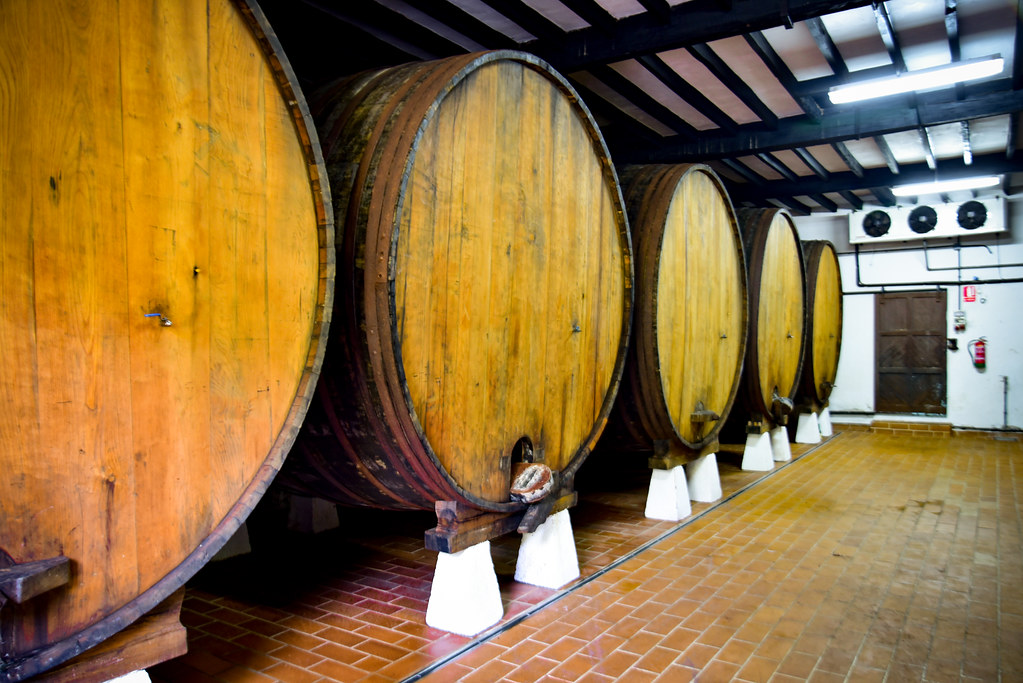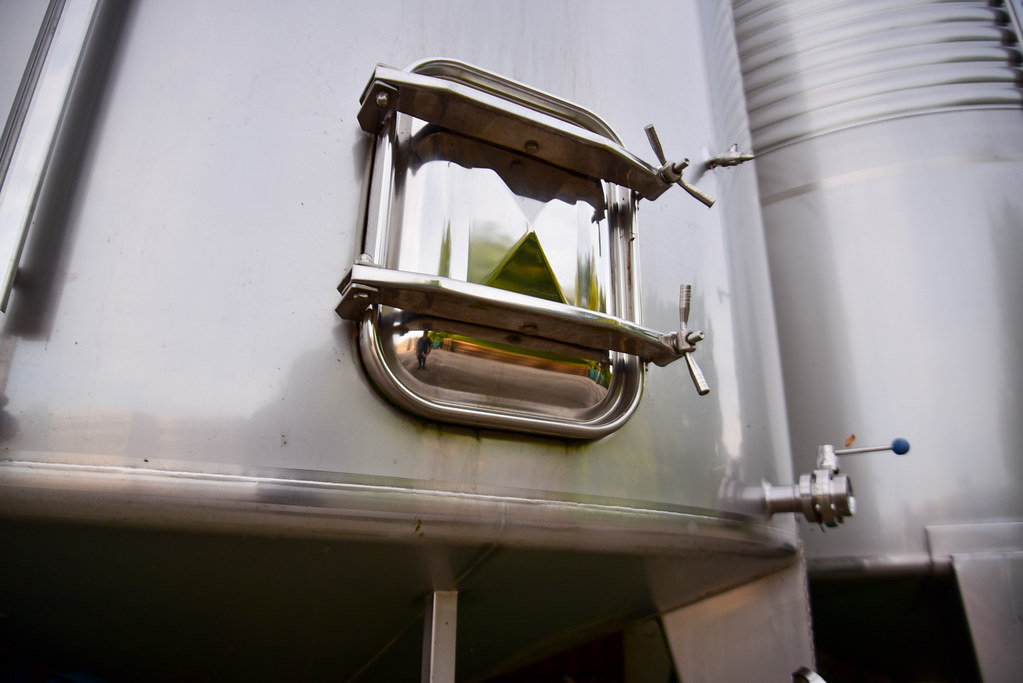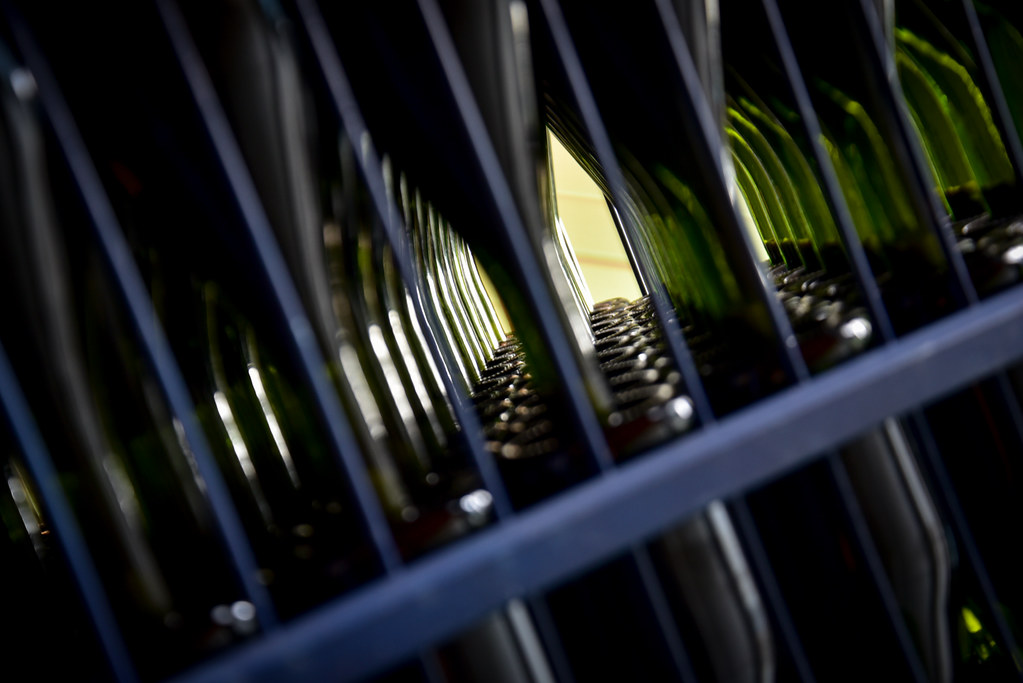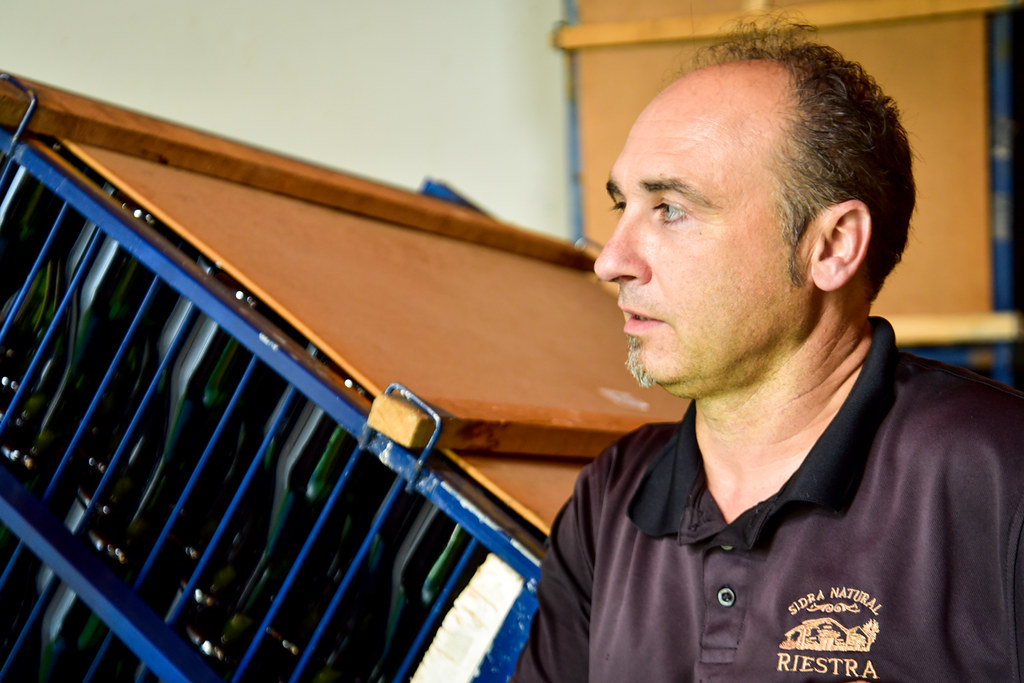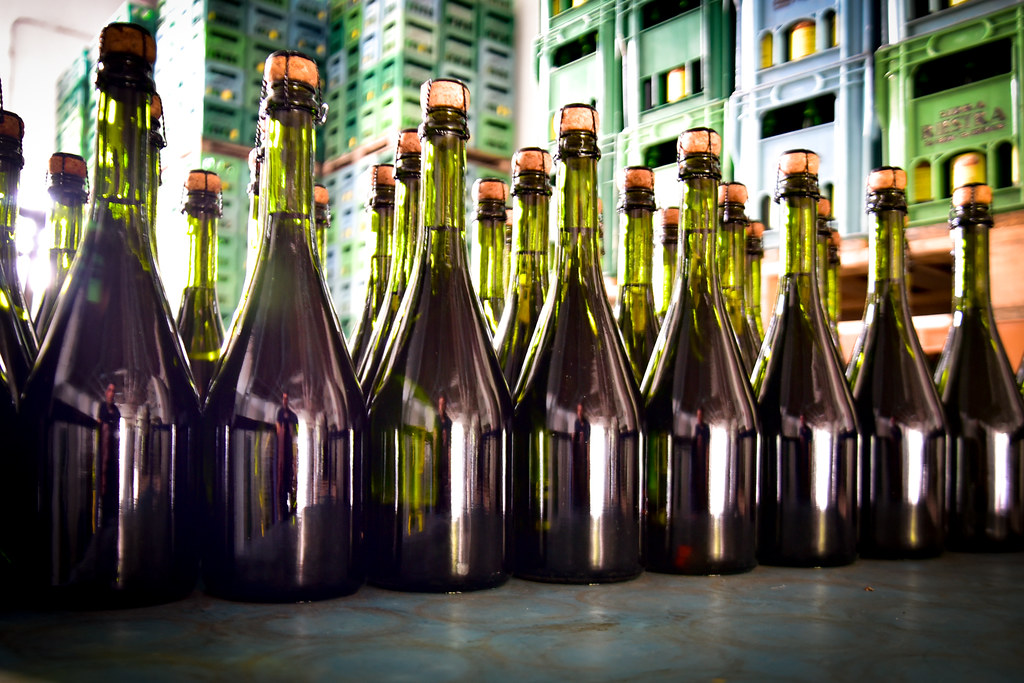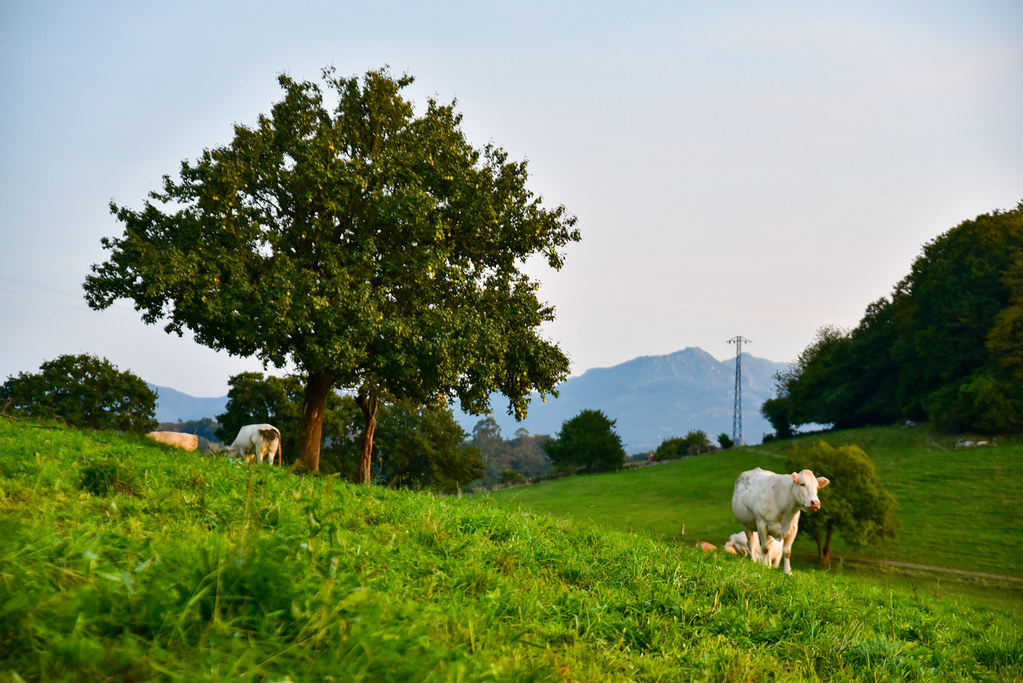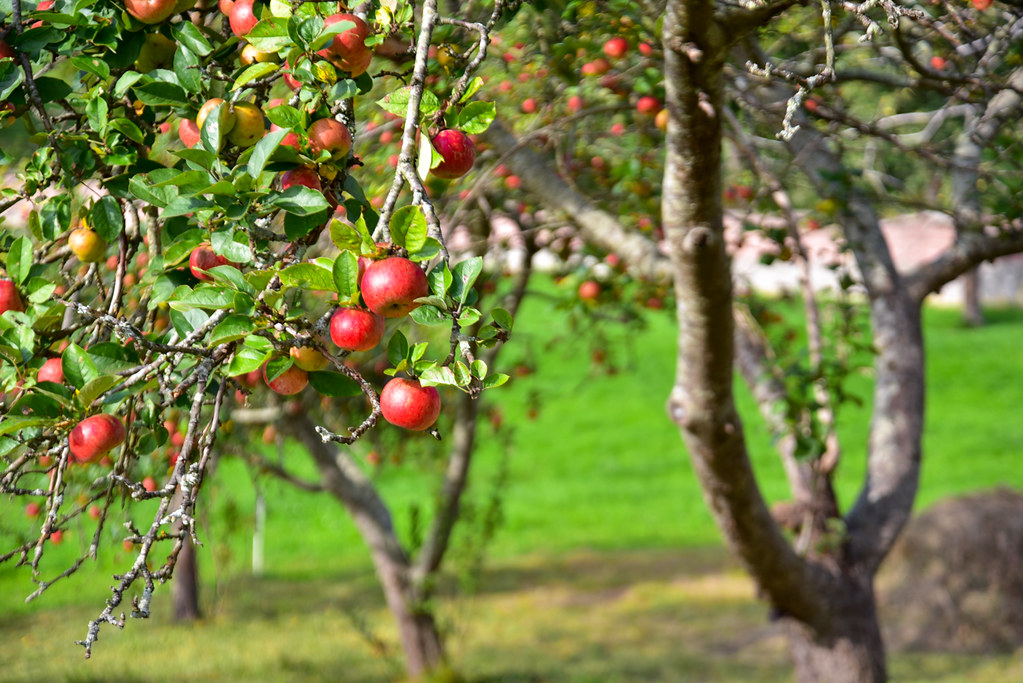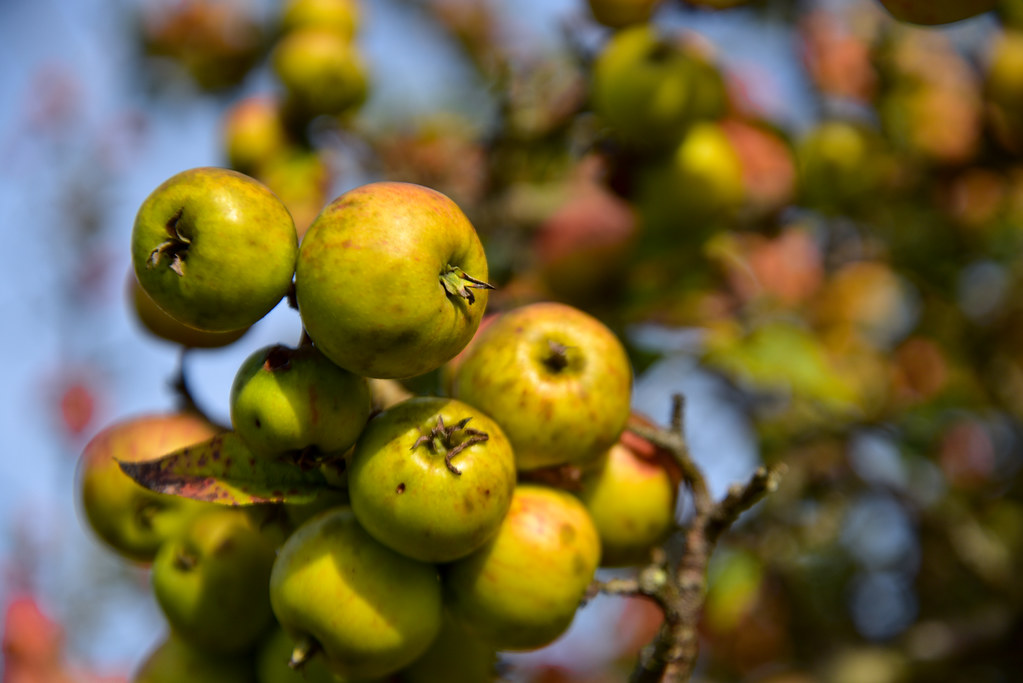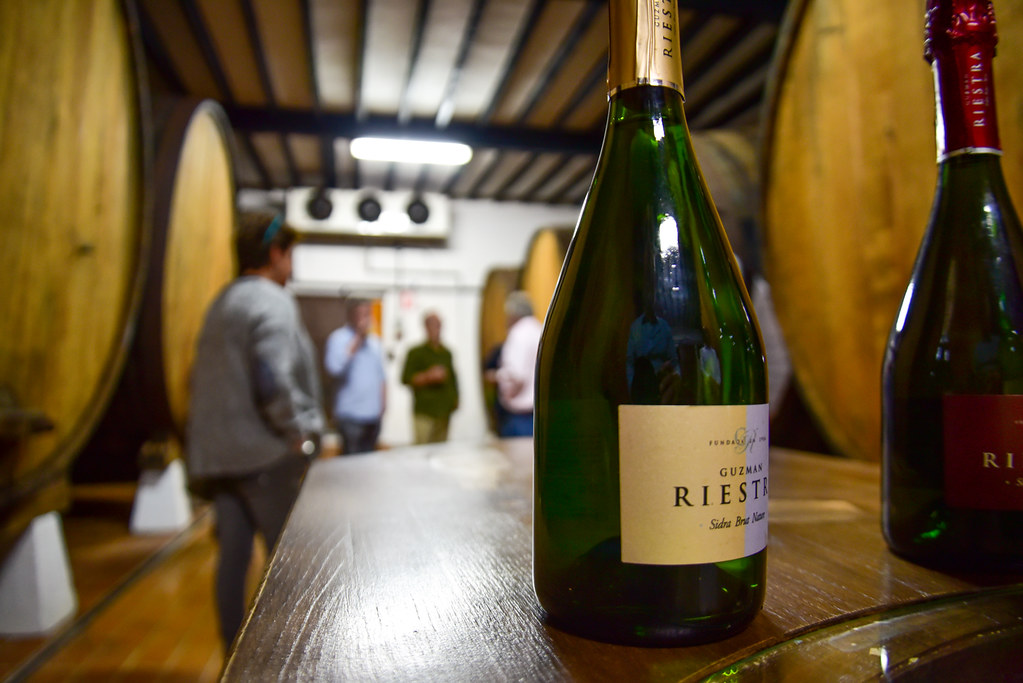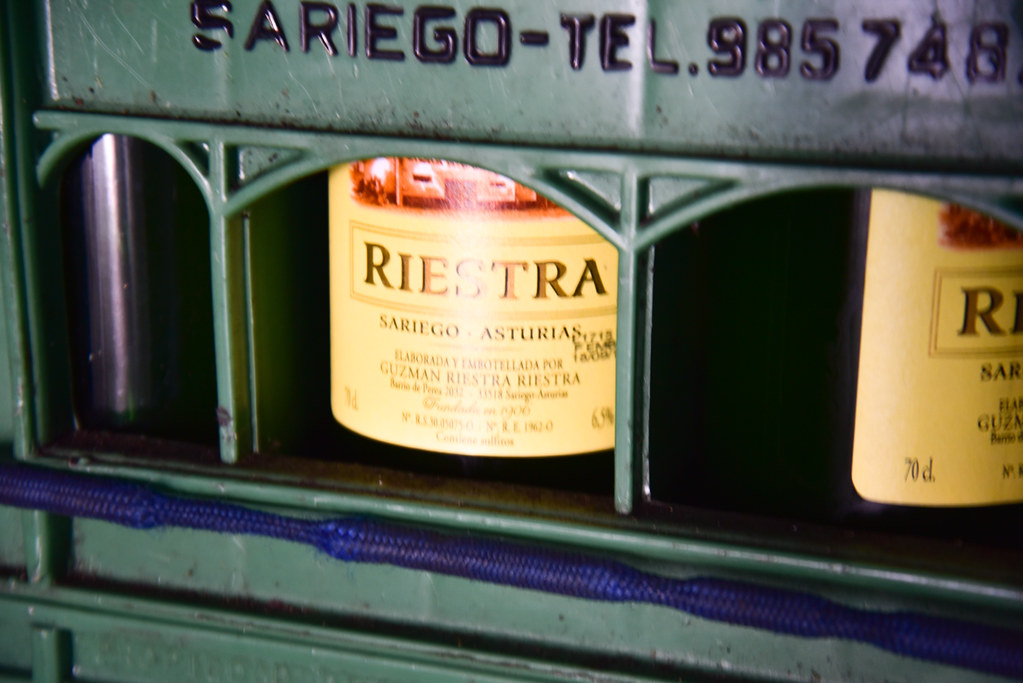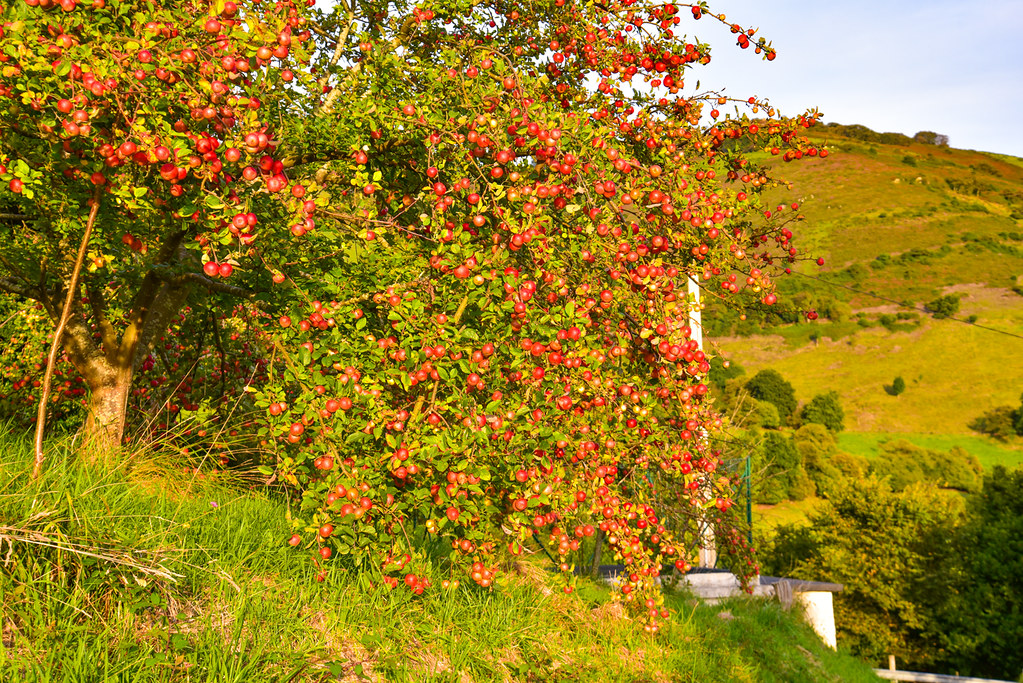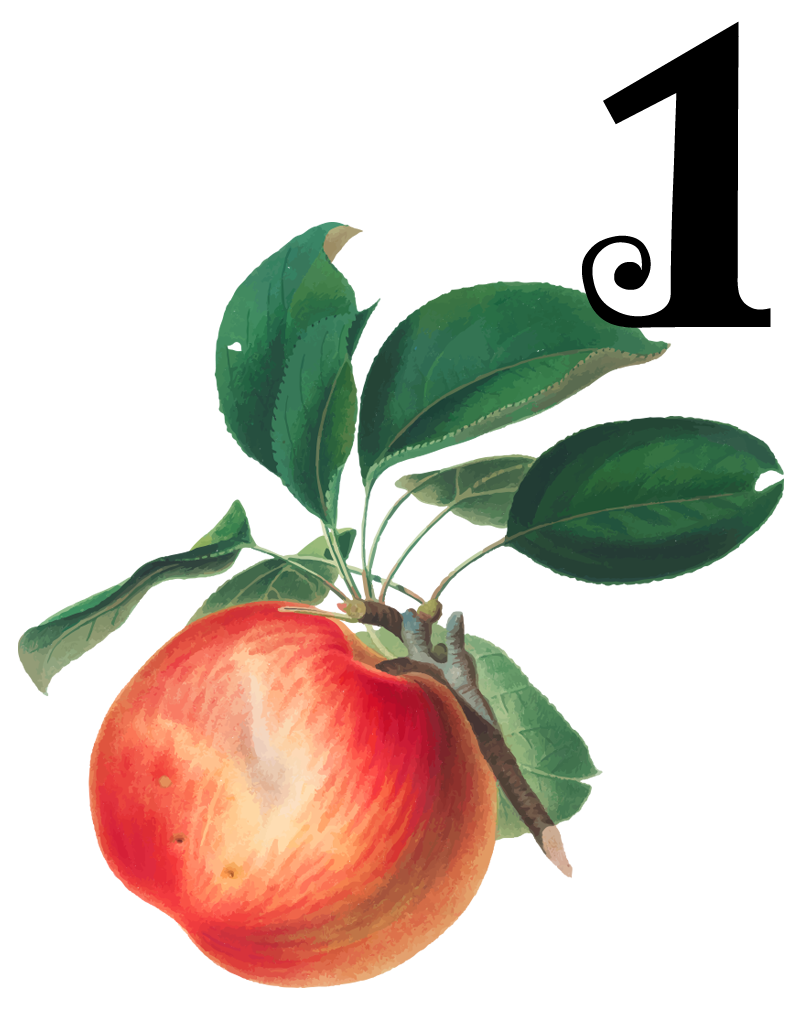
Our apples
Sariego due to both climatic and geographical conditions, is an exceptional place for cider making; this small valley situated in “La comarca de la sidra”(“Cider shire”) has a particularly cold climate due to its altitude (300 to 800 meters) and frequent northeast winds. These are the ideal cold weather conditions for the must fermenting process and, therefore, Sariego is the perfect location for a cider press house. Also, its gentle slopes of limestone are ideal for producing excellent quality apples. The first step is the collection of the apples which is done during October and November; the production varies every year due to “vecería”, which means that orchards produce far more apples on odd years than on even years. The time of the harvest also varies every year due to climatic conditions. Our apples are hand-picked when they are ripe and after selecting all the different varieties we mix acid and bitter ones with sweet ones.

Washing
In Sidra Riestra we have a pioneering system of apple washing which has been designed by us. After apples are stored they are transferred to a hopper which will drop them into a prewash pool, then they are taken to a washing machine and, finally, they are placed into a rinsing pool.

Selection
Once apples are washed they are transferred to a conveyor belt where they are selected by hand. This step selects the apples which are suitable for the grinding process.

Grinding
Apples are crushed and turned into pulp (magaya).

Pressing
The “magaya” (pulp) is pressed using traditional Asturian presses; this process takes about 3 days, depending on the apples ripeness. In order to get the juice out, it is necessary to make what is known as “corte del llagar”. This operation is a sort of ditch which is dug around the surface of the magaya (pulp) which has previously been pressed, and then it is put over the rest of the magaya (pulp) in order to be pressed again. This process is performed five times a day on each press, and is essential because each time you tighten the press, the magaya (pulp) is so compact that you cannot extract any more juice, therefore, it is necessary to stir it by making another ditch (corte).

Fermentation
After cooling the juice, it is pumped up to the barrels, where it remains for several months. The fermentation process will be faster or slower depending on the time when the barrels were filled. The fermentation process in barrels full of late-made juice will be much slower due to cooler climatic conditions and the characteristics of the apples.

Decanting cider
This is done during the moon waning of January, February and March, and consists in transferring cider from one barrel to another. We do this for two reasons; first, to remove the dregs from the bottom of the barrels and second, to unify the musts.
Elaboration Nature Cider


Bottling
Bottle filling is done throughout the year, depending on the orders received and the demands of the market. It consists of bottle filling, corking and labelling using a modern bottling system.


Bottle shaking
This is the final step; the pallets of bottles are placed into shaking machines in order to shake the cider. Formerly, this was done by placing the boxes of bottles lying sideways on the delivery trucks and, thus, the cider was shaken while it was transported to the sidrerías. This needs to be done in order to produce carbon dioxide gas inside the bottle and , therefore, when the cider is poured our olfactory receptors and taste buds will be stimulated by the intense aroma and flavour.
Elaboration Sparkling Cider


Tiraje
It consists on the filling of sparkling cider bottles with base cider and adding the fermentative yeasts for more sugar. The yeasts along with the sugar produce a fermentation reaction, transforming the sugar into alcohol and CO2. The bottles in this step are sealed with shutter and plate.


Ageing
The bottles are settled in rime (horizontal position), the way they will remain for a minimum of 8 months for their ageing.

Clarification
After the ageing the bottles are settled in stalls for its riddling and yeast decantation towards the neck of the bottle.

Disgorging
Through this operation we completely eliminate the yeasts and its wastes deposited in the neck of the bottle. It is made with the freezing of the bottle’s neck by dipping it in glycolate water -25º. After that the shutter and plate are removed, throwing away the frozen part. then the bottle is filled until its top and is sealed with the definitive cork and wire muzzle. The sealed and muzzled bottles must remain for a minimum time of 15 days resting in a suitable place to homogenize the content.

